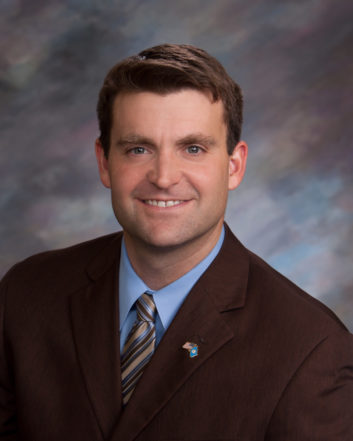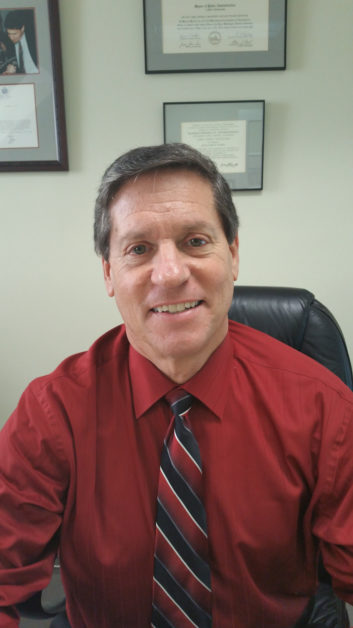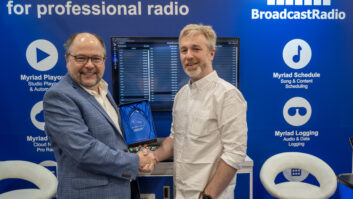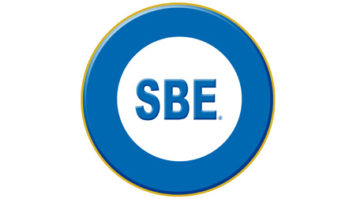
Todd Schlekeway is the president and CEO of NATE: The Communications Infrastructure Contractors Association. Jim Goldwater is NATE director of legislative and regulatory affairs.
NATE: The Communications Infrastructure Contractors Association has collaborated with key industry association colleagues for many years on a wide range of issues that have significantly advanced the nation’s critical communications capabilities.
This month these telecom organizations partnered again to advocate congressional action to help address the substantial workforce shortage in the industry that jeopardizes the national communications goals of expanding broadband and closing the digital divide while enhancing public safety, advancing next generation technologies and maintaining the hundreds of thousands of communications towers already in place.
NATE is a nonprofit trade organization whose membership encompasses all layers of the communications infrastructure ecosystem, and now includes over 1,000 member companies that construct, service and maintain hundreds of thousands of communications towers (broadcast and wireless), distributed antenna systems, small cell networks and broadband throughout all 50 states and 13 other countries.
[Read: Prepping a New Master Antenna for Charm City]
NATE, joined by the National Association of Broadcasters, the Competitive Carriers Association, CTIA, the Government Wireless Technology and Communications Association, the National Wireless Safety Alliance, the Rural Wireless Association and the Wireless Infrastructure Association, wrote to key Congressional committee leaders in support of legislation that would help the industry attract, recruit and train tower workers.

Our coalition cautioned that efforts to advance major telecommunications legislation during the 116th Congress, which expires at the end of this calendar year, had not yet addressed the workforce shortage.
Without a commitment to ensure that there will be an adequate supply of workers, the nation’s technology development and deployment challenges will not be addressed.
Moreover, we wrote that “The ongoing pandemic illustrates so clearly how essential our industry and our workforce are, with so many Americans forced to work, study and play remotely.”
Communications infrastructure is of course critical to our capacity to conduct business, engage in telehealth and ensure that radio and television stations can continue to inform our communities, while we work toward closing the digital divide and deploying 5G wireless technology and broadcast Next-Gen television in the future.
These are priorities that our letter conveyed, and we are both pleased and proud to have collaborated with our very good friends at the National Association of Broadcasters on it.
We specifically identified a few pending bills that would help address workforce development in our industry.
NATE actually assisted in the development of one of them, the “Communications Jobs Training Act,” which would provide funds for job training to enhance communications tower service. It would authorize grants to community colleges, vocational institutions and military organizations to establish or expand job training programs for communications tower service, construction and maintenance.
Our letter also cited legislation designed to develop recommendations on how to address communications workforce needs. It also highlighted the utilization and coordination of apprenticeship programs.
In January, NATE Chairman Jimmy Miller testified before the Senate Committee on Commerce, Science and Transportation at a hearing entitled, “The 5G Workforce and Obstacles to Broadband Deployment.”
He stressed that “the most significant challenge with which our industry and contractor firms like mine are dealing … is the shortage of a properly trained and qualified workforce that is expected to possess the diverse skill set necessary to produce the expansion of universal broadband, public safety and ubiquitous 5G coverage across North America, while completing the broadcast repack. If we are to win the hypercompetitive global race to build and deploy 5G, which will enable our national, state and local economies to leverage technologies based on the Internet of Things, smart cities, artificial intelligence and virtual reality, we must ensure that we have enough trained workers. We simply cannot meet these national goals without doing so.”
Radio World readers may be interested in hearing more about the workforce issues as it relates to the broadcast industry, and specifically the repack transition. Although the repack was scheduled to wrap up in early July, there are still a number of stations that have not completed the transition.
The broadcast repack transition helped shine a spotlight on the fact that there are a finite number of crews in the United States capable of working on tall towers. Broadcast tower work is a different animal altogether given the complex techniques, skill-sets and equipment associated with the work, not to mention working on towers ranging 1,000–2,000 feet tall.
NATE estimates that there are only approximately 40 crews (typically consisting of 5–6 tower technicians per crew) in the country that are truly trained to perform work on broadcast towers.
Of these 40 crews, only about 30 are capable of performing the most complex large broadcast and arbor stick tall tower work. The other broadcast crews are equipped to perform activities such as non-arbor stick work up to 1,000 feet, small stack and crane work or helicopter work. Many of these companies have been in the industry a long time and have an experienced, but aging workforce.
These factors served to exacerbate these issues in the broadcast industry and led to some companies having to supplement their tower technician workforce by bringing in crews from select countries in Europe for this specialized, tall-tower repack work.
NATE is committed to investing heavily in workforce development initiatives that we believe, over time, can help alleviate some of the technician labor challenges both the wireless and broadcast sectors continue to face, but there is no magic wand. It is abundantly clear, however, that addressing our communications infrastructure needs is good for our nation’s economy and competitiveness, today and tomorrow.
Congress could play a role in shaping the industry’s future by passing the communications workforce development legislation that has been introduced in bipartisan fashion.







